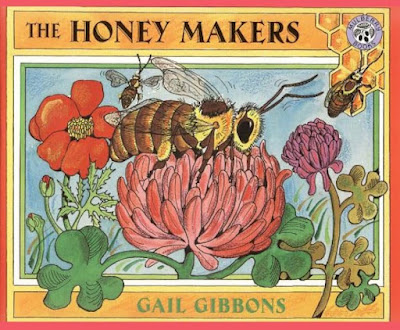Rainbow Order Beehives
Learning Targets
I can...
- Create an original Rainbow Order Beehives using drawing techniques learned in class
- Use shape variation (geometric, organic, free form), line types (horizontal, vertical, diagonal), and space (positive, negative) inspired by Manchester Artist (2017-Present) Kelly Stanford
- Use painting techniques (overlapping, blending, layering) and design principles (proportion, repetition, emphasis) based on Illustration
- Define Rainbow Order (colors in order from longest to shortest red orange yellow green blue purple wavelengths)
Lesson One
Day One, Art Start
1. Hyper Realistic Insect Illustration 3 (2018) Kelly Stanford
2. Read The Honey Makers by Gail Gibbons
3. Discussion Questions "Did you know honeybees dance to communicate information? Do you know bees use hexagons to build their hives? Why do honeybees love hexagons? What is all the buzz about? How can you use reflective symmetry to draw a bee? Why is there a prevalence of bees in art throughout human history? What is a honeybee and how does the honeybee function as a system? Are bees important and why? How many of the things we eat and need are dependent on bees? How do flowers propagate? What do bees need to live? Why should we protect the honeybees and their habitats? How can we help protect honeybees and their habitats in our community? How can we show what we have learned about bee habitats and help to motivate others to protect the bees? Are bees important any why?"
Lesson Activities
1. Use ruler, compass, or straightedge to draw the scenery (background, middle ground, foreground) of the beehive paintings
2. Add details (buildings, branches, leaves, clouds) within the scenery (foreground, middle ground) of the beehive paintings
3. Use colored sharpies to outline the scenery (foreground, middle ground, background) of the Rainbow Order Beehives
Day Two, Art Start
1. Retrieve Rainbow Order Beehives for Assigned Tables
2. Hyper Realistic Insect Illustration 13 (2018) Kelly Stanford
3. Discussion Questions "What can we make with this now? What is something found in nature? What if it was a habitat for an insect? How can we make the cylinder shape or a real beehive when the cardboard is flat? Are bees going to school? Are bees living in houses or at a birthday party? What would be going on in there? Why do bees like the smell of nectar? What makes honey bees buzz? What would be going on in there? Why doo bees like the smell of nectar? What colors are the bees? How many legs do the bees have? How many wings do the bees have? Are bumblebees bigger, smaller, or the same size as honeybees? How many species of bees are there in the world? What kinds of bees are there in a colony?"
Lesson Activities
1. Add patterns (swirls, clouds, stars) into the scenery (foreground, middle ground, background) of the beehive paintings
2. Use rainbow order (red orange yellow green blue purple) to fill in the scenery (foreground, middle ground, background) of the beehive paintings
3. Use color combinations (complimentary, secondary, analogous) to fill in the scenery (foreground, middle ground, background) of the Rainbow Order Beehives
Day Three, Art Start
1. Retrieve Rainbow Order Beehives for Assigned Tables
2. Set Up Studio Area (glue sticks, construction paper, scissors, tempera paint)
Lesson Activities
1. Add highlights (reflective light, sunlight, cast light) within the scenery (foreground, middle ground, background) of the beehive paintings
2. Add shadows (cast shadow, reflective shadow, shadow) within the scenery (foreground, middle ground, background) of the beehive paintings
3. Add details (branches, leaves, flowers, clouds) within the scenery (foreground, middle ground, background) of the Rainbow Order Beehives




























